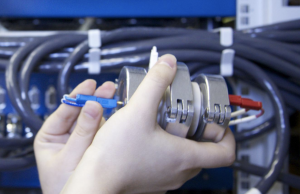
Future electric car Lithium-air battery


Dr. Jeff Chamberlin, 52, having managed battery research at the Argonne National Laboratory in Chicago and former director of the Argonne Collaborative Centre for Energy Storage Science ( ACCESS), the US government’s top technology laboratory, where he classified over 30 new inventions, now runs Volta Energy Technologies, backed by Albemarie, one of the world’s largest lithium producers.
Chicago-based Volta, launched last month, is entering a market that over the past twelve months has seen a surge in the price of metals like cobalt which is mostly used in Lithium-ion batteries, which was introduced to the world by Sony over 25 years ago.
Volta seeks to serve as a bridge between private companies that have a stake in cutting-edge technology energy storage research and institutions such as Argonne.
Although the sales of electric cars nearly double since 2013, you can’t drive no more than 100 miles on one charge. The main difference between lithium-ion and lithium-air batteries is that the latter replaces the traditional cathode – a vital battery component involved in the flow of electric current with air, which makes the rechargeable metal-air battery lighter with the potential to pack in more energy than its commercial counterpart. There also currently four electrolyte designs, one of which involves water, and protects the lithium from interacting with gases in the atmosphere and enables fast reactions at the air electrode. Since water in direct contact with lithium can damage it, but adding a protective material to the lithium metal is one approach although this decreases the battery power. So sandwiching a polymer electrolyte with high conductivity and a solid electrolyte in between the lithium electrode and the watery solution. The battery with high conductivity of lithium ions and the ability to discharge and recharge 100 times and could one day power Electric vehicles thanks to their low cost.
A NIMS research team led by Yoshimi Kubo and Akihiro Nomura has developed lithium-air batteries with electrical storage capacity 15 times greater than the capacity of conventional lithium-ion batteries using carbon nanotubes as an air electrode material. The scientists aim to develop practical, high-capacity lithium-air batteries increasing energy density in cell layer stacks and removing impurities from the air.
Chamberlin aid “ there are several new innovations using new materials that can improve the battery technology for electric cars. As of now most electric cars use an oxide of lithium, nickel and manganese and cobalt at the cathode and graphite at the anode. If the battery uses lithium metal at the anode and sulphur at the cathode, and the use of larger batteries for storage of power from the sun and the wind also opens up opportunities for different technologies relying on different materials such vanadium, a metal that is used to strengthen steel, and sodium.”
Jeff Chamberlin, a physical chemistry graduate from Georgia Tech, further said “innovation itself is difficult, and translating it into a reliable cost-effective commercial product is truly both an art and a science.”
